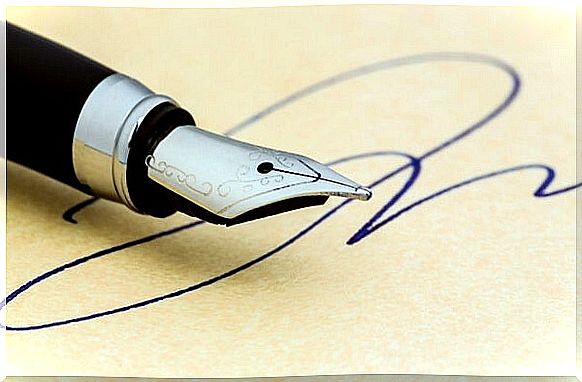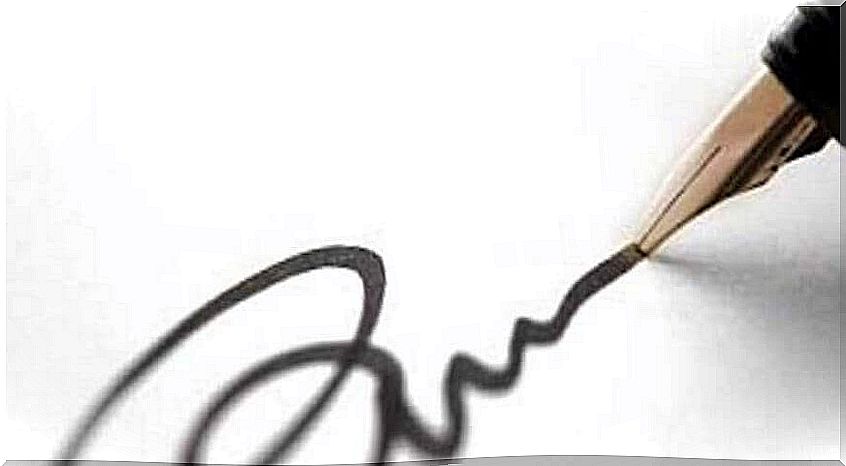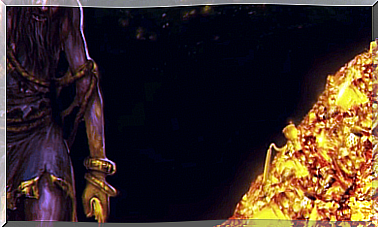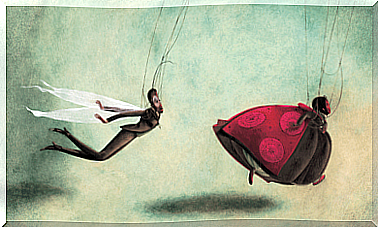What Your Signature Says About You

The signature is not just a scribble with which we legally identify ourselves. Beyond that function, an autograph captures the main features of our temperament, as well as our secret fears and ambitions.
Although the personality of someone cannot be deduced only through the signature, the truth is that it does give important indications about the way of being of a person. Some even assure that the signature is like a synthesized autobiography or self-portrait, basically in terms of the valuation that each person makes of himself.
Unlike other texts, the signature also includes a rubric or a series of lines that accompany or replace the name. They are all those lines, ornaments, or distinctive elements that we add, in principle, so that our signature is not easily falsifiable
But, at the same time, those lines speak unconsciously of ourselves. These are some of the main interpretations of the firm.
General features of the firm
One of the main elements that must be observed is the way in which the name is written within the signature. There are those who write it completely, while others abbreviate it or simply omit it. In this regard, the following variations appear.
- Write the full name : it is a sign of self-appreciation, security and self-acceptance.
- When the name is deleted or abbreviated : it indicates that there is rejection of childhood experiences and a desire to forget the past.
- If the maternal surname is deleted or abbreviated : it is most likely that there is an unresolved conflict with the father, which remains fixed in the unconscious.
- Those who sign only with their initials : they imply that they carry a deep sense of guilt within them.
- The name and surname that are written on two different levels : it denotes undervaluation and the existence of an internal conflict that leads the person to feel “divided”.
The size of the signature is also important. Large firms correspond to people who want to appear or be noticed, while small firms tell us about those who want to go unnoticed.
If the name is greater than the last name, it suggests a person tied to childhood experiences. If, on the other hand, the surname is larger than the first name, it represents people with a great need for social success.
What the rubric tells us
In graphology there is a maxim that says: “Less heading, more personality. ” This means that the simplest and simplest signatures identify the people who feel more confident about themselves and vice versa. There are also other elements of the rubric that describe the author of a signature:

The enveloping rubrics
They are those where the signature appears surrounded by lines that enclose it. They denote insecurity, dependency, immaturity and strong attachment to the mother figure. It also refers to a need to “hide”, since there is a self-reproach that remains latent.
The rubrics that cross out the signature
Sometimes the name or basic signature is crossed out or crossed by the lines of the rubric. In this case, what is represented is a fear of being attacked by the parents, in particular by the father. It speaks to us of an inordinate desire for perfection and of severe criteria to guide life.
Rubrics that make the signature illegible
The name does not appear, but rather a series of lines or squiggles, with no apparent meaning. This can be interpreted as a result of an escapist person, who has a great fear of showing himself as he is. It indicates feelings of inferiority and hidden fears.
Signature placement

The way the signature is located on the paper also offers clues about what a person is like and, in particular, how he or she stands in front of himself and in front of the world. Slants in text or placement to the left, center, or right, on a line, suggest different types of temperament.
- If the signature is placed to the left or leans to the left : there is disappointment and fear in front of others. It speaks of a person who imposes self-limitations to achieve his goals.
- Signature in the center of the line – suggests an indecisive person, who tends to postpone his plans and projects. If the firm is large, it is because it tends to have theatrical behaviors.
- Signature located on the right : it belongs to independent, proud and individualistic people. There is some instability and the need to deal with several things at the same time.
- The upward tilt represents your own requirement. If the signature slopes up slightly, it means that the person wants to grow and improve, but if it is too pronounced it can mark too much self-demand.
- A downward sloping signature indicates apathy and resignation, the deeper the more sloping the signature is. It can also reflect depression, pessimism, lack of self-confidence or great mental or psychic fatigue.
Other aspects to consider in the signature
These aspects can provide more information about the individual’s personality:
Shapes of the lines
- The predominance of curved lines indicates aesthetic tastes, friendliness and good manners.
- The majority presence of straight and angular lines, on the other hand, is a sign of pragmatism, order and discipline.
Size
The larger the signature, the more outgoing the person is likely to be, and vice versa. Although it may also be that a shy and insecure person needs to show themselves more, in this way, to others. It is considered a usual size between 12 and 18 millimeters.
Stroke pressure
Talk about temperament. The stronger you are, the more passionately you live life. Instead, a light stroke represents a subtle and adaptable temperament.
To conclude, it is important to emphasize that judging someone exclusively by their signature is like disconnecting the personality from their environment or valuing a person for their physical appearance.
However, although generalized conclusions cannot be drawn from the exclusive analysis of a firm, this resource can provide us with important elements about the personality of another person or of ourselves.









